The 10 Most Affordable Places to Visit in Mexico
Mexico has become home to some of the world's best names in luxury, but it doesn't mean there aren't still incredible budget-friendly destinations.
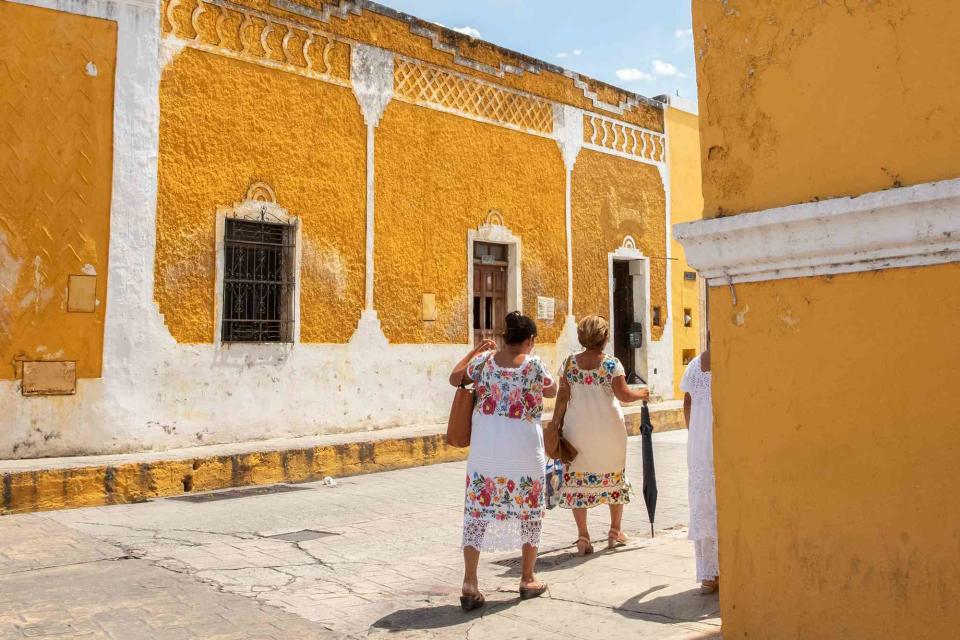
Itzel Garrido/Travel + Leisure
If Mexico has shown us anything in the past few years, it’s how it excels at extreme luxury. Long gone are the days when Mexico was sought after for its backpacker-friendly destinations and prices. Today, Mexico has transformed from a strictly budget-friendly destination to a coveted luxury getaway, touting names like One&Only, Auberge, and Four Seasons, a constellation of Michelin-starred chefs, and a design and fashion scene that rivals Paris, London, and Milan.
A surge in upscale resorts, an evolution in gourmet dining, and a change in traveler's priorities to favor exclusive, local experiences have all helped to skyrocket Mexico's popularity — and its price tag. Add to that an infusion of international investment and a very strong peso, and it's easy to see how Mexico has shed its former reputation and emerged as one of the top luxury destinations in the world.
Still, while well-heeled travelers are basking in the private plunge pools of Cancun and Cabo, sampling the menus of Michelin-starred chefs in San Miguel de Allende, or disappearing to the chic yoga retreats of Riviera Nayarit and Tulum, Mexico still has plenty of affordable destinations.
"Ultimately, these same dynamics of less visitation by international travelers offer more authentic destinations and less diluted by the influence of foreign cultures, values, and attitudes," said Zach Rabinor, CEO of Journey Mexico and a Travel + Leisure A-List Advisor. "These less-touched communities often have celebrations, festivals, processions, and other events that may have disappeared from more frequently touristed destinations. The spirit and experience of more authentic, 'real Mexico,' is stronger in these more off-the-beaten-path destinations."
From the laid-back shores of Mazatlan to the misty mountains of San Cristobal de las Casas and the colorful colonial buildings of Campeche, here are some of the best, most affordable places to vacation in Mexico.
Mexico City
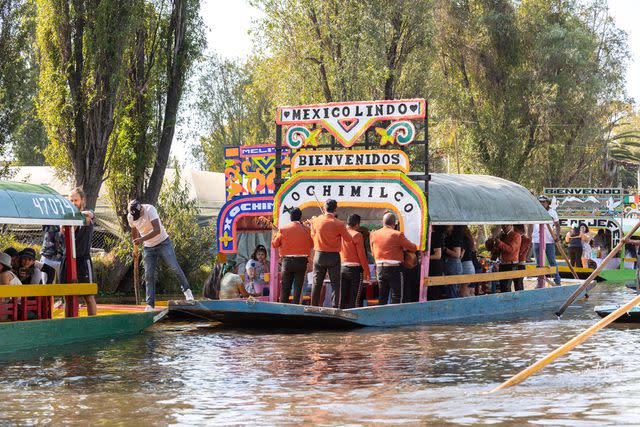
Stephanie Pollak/Travel + Leisure
The capital of Mexico is far from an "off the beaten path" destination. Quite the contrary. Mexico City is one of the most popular destinations in Mexico, with one of the busiest airports in Latin America and some of the most luxurious hotels in the country. However, what Mexico City has in its favor for affordability is its sheer size and diversity.
The city's vibrant neighborhoods offer ample opportunity to score travel deals in boutique hotels, dive deep into the street food scene, and while away the evening hours in its variety of dive bars. While budget-conscious travelers may feel priced out of neighborhoods like Polanco, neighborhoods like Condesa and Roma continue to offer funky, affordable accommodations and restaurants. Even more affordable are neighborhoods like San Angel, San Miguel Chapultepec, and Zona Rosa.
Plus, Mexico City has so many things to do for free (or close to free), like wandering Chapultepec Park, exploring its thousands of museums and galleries, or marveling at the architectural masterpieces in the Zocalo. It's also easy to move around Mexico City on a budget, as the subway costs a very enticing 5 pesos — that's about a quarter.
Puebla
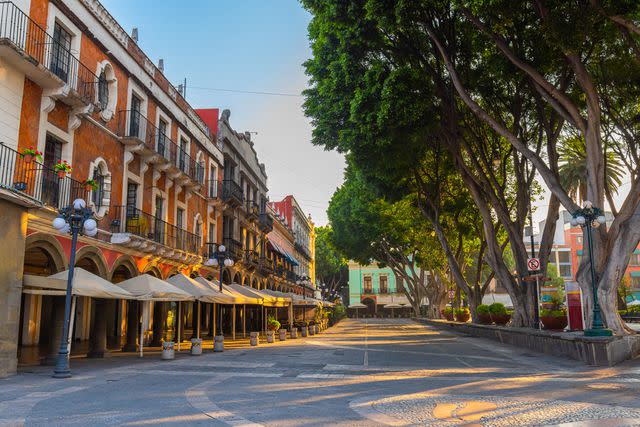
Gerardo Huitrón/Getty Images
Rabinor recommends the city of Puebla as one of his top affordable destinations in Mexico. Puebla is a visual feast, from the centuries-old Spanish architecture to the buildings peppered with hand-painted Talavera tiles and the looming silhouette of Popocapetl volcano in the distance. Puebla has a rich heritage and an even richer culinary scene — mole is one of the state’s signature dishes.
While Puebla does have its share of pricey hotel options, visitors can also choose from many budget-minded boutique hotels. Puebla is also home to many free or low-cost attractions. You can wander the historic center, a UNESCO World Heritage Site, without spending a single peso. The Puebla Cathedral is a must, as are the secret tunnels that run underneath much of the city. These tunnels have a history that dates back nearly 200 years.
Puebla is also rich in markets like Mercado El Carmen and Mercado de Sabores Poblanos. These dynamic cultural institutions are great places to shop for handmade goods at budget-friendly prices or snag a filling meal for just a handful of pesos. Tip: Try a cemita, a plump, overstuffed sandwich that is local to Puebla.
Merida
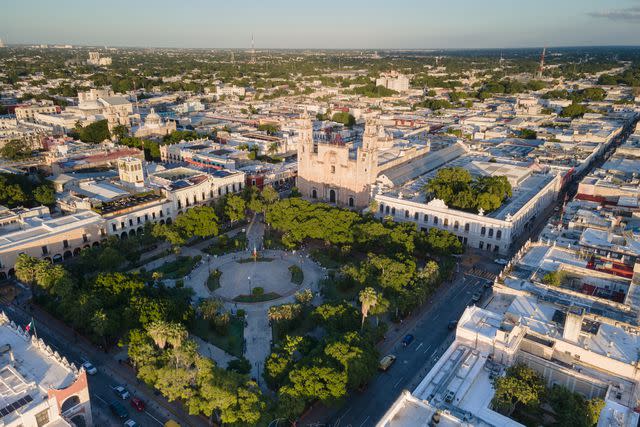
Itzel Garrido/Travel + Leisure
Merida, the capital of Yucatan, is one of my favorite cities in Mexico. The steamy, low-lying city is a treasure trove of architectural and design beauties, from the majestic Paseo Montejo avenue lined with its 19th-century mansions to the Mayan city of Uxmal, about an hour outside the city.
Merida may be a capital, but it's precisely why it has remained so affordable: options! Merida has a wide range of accommodations, with many affordable ones located within walking distance of its top attractions. It's also a foodie capital, with traditional Yucatecan dishes taking center stage, like cochinita pibil, panuchos, and sopa de limon. These traditional dishes are hearty and complex, worthy of a much higher price tag, but will never break the bank.
Visitors can also move around Merida at a very low cost. Not only is the bus system budget-friendly, but Uber is also prevalent throughout the city and at an extremely reasonable price. As for things to do, Merida's impressive historic sites, from the Plaza Grande to the Merida Cathedral, are all free to visit, and the city is known for its calendar of free events, from concerts in the park to art exhibitions.
Guanajuato
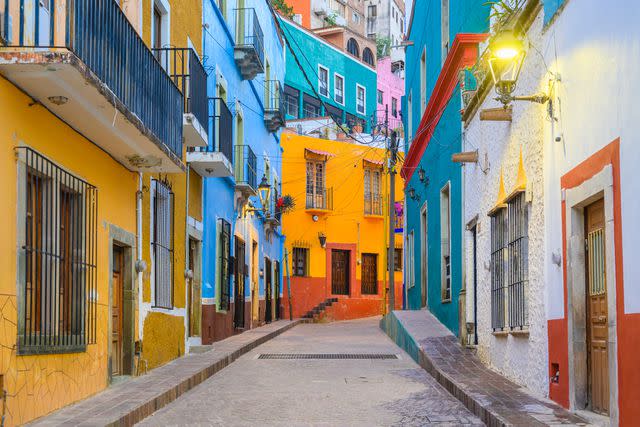
© Marco Bottigelli/Getty Images
Guanajuato is another top affordable pick on Rabinor's list. One of Mexico's most vibrant and colorful colonial cities, Guanajuato is a dizzying array of architecture, culture, and rich history. It's also a great option for budget-conscious travelers who want to experience a dynamic cultural city without burning a hole in their pocket.
One of Guanajuato's top draws is its wide range of accommodation. Visitors can check into cozy guest houses, boutique hotels, or Airbnb rentals, many of which offer great amenities at a much lower price point than in other cities.
Guanajuato's cuisine is another reason to visit this color-splashed city. Famous for the local dish, enchiladas mineras, a centuries-old recipe of tortillas stuffed with cheese and onions and piled high with a carrot and potato stew, you can find this dish everywhere, from street carts to local holes in the wall. The many markets and vendors offer other regional and national specialties for equally satisfying prices.
The city's Centro Historico has been declared a UNESCO World Heritage Site and is a frenzy of colonial architecture and cobblestone streets. Guanajuato is a hilly city, but visitors love getting out on foot to explore the plazas and winding alleys — all free. Plus, the museums and galleries in Guanajuato are very affordable. The Museo de las Momias (Mummy Museum) is one of the city's most fascinating; entry tickets are less than 100 pesos ($5.84).
One of the most exciting times to visit Guanajuato is during the International Cervantes Festival, a celebration of Spanish literature and culture highlighting the short plays by Miguel de Cervantes. But remember, hotels are probably at their most expensive during this festival, which runs the last two weeks of October. Guanajuato is perfectly positioned to experience the miles of hiking trails and lookout points nearby — all for free if you like outdoor adventure.
Mazatlan
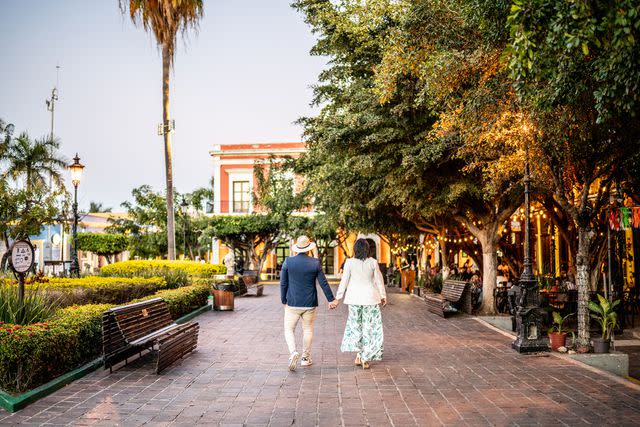
FG Trade Latin/Getty Images
Mazatlan is one of the most underrated destinations in Mexico by international travelers. Very rarely do you find a beach destination as interesting as affordable. Mazatlan is predominantly a beach destination for domestic travelers and has retained its undeniable authenticity as a Mexican beach destination. Think bucket-sized Micheladas and the plonky sounds of banda music on the beach. But Mazatlan also rewards with a historic and charming Centro Historico — one of the few destinations in Mexico with a colonial historic center just blocks from the beach.
Typical to Mexico's beach destinations, Mazatlan has a long strip of beachfront resorts in its Zona Dorada, or Golden Zone. But because the city has miles — yes, miles — of beaches, you can find beachfront resorts from one end of the city to the next. It also has a selection of affordable downtown hotels clustered around the Centro Historico, so travelers have many options.
While Mazatlan is predominantly a beach destination, it also offers much to culture seekers. The Centro Historico is packed with colorful buildings and notable landmarks, including the historic Angela Peralta Theater and the Plaza Machado — two destinations where you can find year-round cultural performances and entertainment.
Mazatlan is also a foodie capital, particularly if you like seafood. One of the leading shrimp suppliers in Mexico, the seafood here is fresh, abundant, and won't cost you a fortune. If you like nightlife, Mazatlan's bar scene is legendary, with clubs, dives, lounges, and live music venues — all at a fraction of the price compared to nightlife in some of Mexico's other beach destinations.
Lagos de Moreno
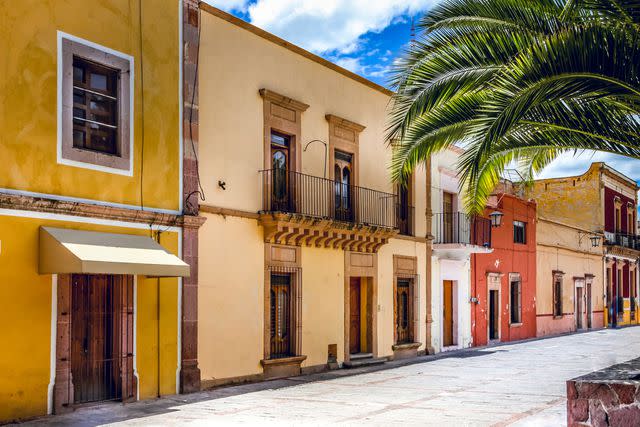
Roberto Armocida/Getty Images
Mexico’s state of Jalisco may be most famous for its capital, Guadalajara, and beach empire, Puerto Vallarta — two phenomenal destinations, albeit more expensive these days. But Rabinor also recommends visiting Lagos de Moreno, a stunning Spanish-influenced city in the state's northeastern corner. Packed with history and peppered with gorgeous architecture, Lagos de Moreno is a historic treasure, an iconic Pueblo Magico, and one of the most affordable destinations in Mexico.
The heart of Lagos de Moreno starts in its historic center, a UNESCO World Heritage Site with many buildings that date back to the 16th century. The Parroquia de La Asunción is the crown jewel of the historic center, framed on all sides by cobblestone streets and colorful colonial buildings. Behind the church is the Museum of Sacred Art, where you can view oil paintings and sculptures and even explore an interactive room that tells stories about the regional culture. Entry into the museum is free.
After wandering the centuries-old streets, pick up a plastic chair at a street food stall for a heaping plate of birria tacos or carne en su jugo — two succulent, savory dishes indigenous to Jalisco.
San Cristóbal de las Casas
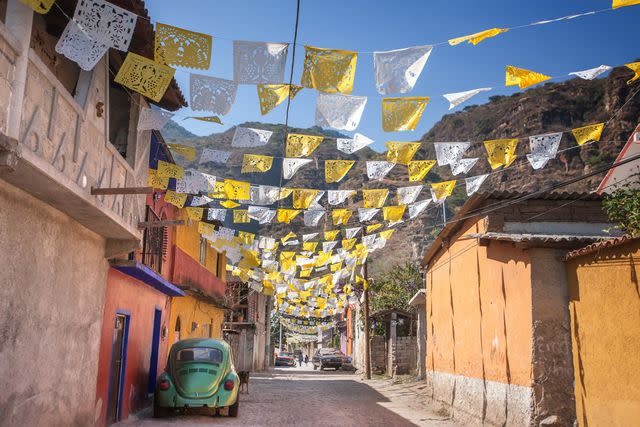
Sicha69/Getty Images
High up in the Chiapas Highlands, San Cristobal de las Casas is a misty mountaintop city steeped in mysticism, webbed with cobblestone streets, and wrapped in dramatic views.
I first visited San Cristobal de las Casas on a tight-budgeted backpacking trip across southern Mexico. After wandering the stone streets and cultural landmarks, I soon saw that backpackers were the bread and butter of the tourist scene here in this affordable city. Accommodations run the gamut from budget hostels to charming guest houses and affordable hotels. You won't find any international luxury hotels in this historic city.
The highlands of Chiapas are one of the best places to learn about the original communities in this part of Mexico. The indigenous communities surrounding San Cristobal de las Casas are the Tzotzil Mayans, who can be seen all over the city in their bright, colorful dresses. Visitors can pop into the Museo de la Medicina Maya to learn more about the rituals and practices of this centuries-old community.
One of the best ways to support the local community is to shop at the Mercado de Dulces y Artesanías. This budget-friendly market sells everything from handicrafts and textiles to locally-made pastries and sweets.
The historic center of San Cristobal de las Casas is breathtaking. At its center is the canary yellow Cathedral of San Cristobal, which stands on a hilltop perch and overlooks the valley below.
It's an extremely walkable city, but if you want to venture further to see attractions like the impressive Cañón del Sumidero down the mountain, you can take a colectivo (shared van) or a bus down into the valley to witness one of Mexico’s most impressive natural wonders.
Patzcuaro
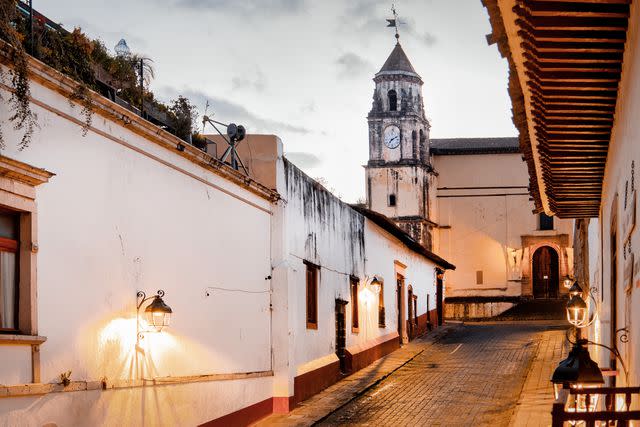
Arturo Peña Romano Medina/Getty Images
The historic colonial town of Patzcuaro, located in the state of Michoacan, is a place of impressive beauty and cultural heritage and stands out as an incredibly affordable travel destination. It is also one of the oldest cities in Mexico and has one of the most visually stunning celebrations for Dia de los Muertos.
Poised on the banks of Lake Patzcuaro, Patzcuaro's historic center is a living museum of colonial architecture, with its colorful buildings, plazas, and centuries-old churches. The city was first founded in the 14th century as the capital of the Purepecha Empire. The Spanish took over in the 16th century, establishing their settlement in 1538. Today, visitors can wander through Patzcuaro's history via its narrow streets, visit the Basilica of Our Lady of Health, and explore the Plaza Vasco de Quiroga for free.
One of the best places to explore in Patzcuaro is the Mercado de Antojitos, a chaotic array of food stalls serving glorious traditional Michoacán dishes and snacks. For crafts, head to the Mercado de Artesanias, where you can pick up locally crafted pottery, textiles, and woodwork.
The most popular time to visit Patzcuaro is at the end of October and early November for the annual Dia de los Muertos celebration. While other destinations have commercialized the traditional Day of the Dead celebrations, Patzcuaro is one destination where the festivities ring true to their roots. Pick-up trucks bursting with bright orange marigolds rattle down cobblestone streets as altars spring up all over the city. Processions pass through the streets and into cemeteries while the ethereal glow of hundreds and hundreds of candles lights the entire town. Not to miss is the Danza de los Viejitos, a traditional folk dance native to Michoacan.
Chihuahua
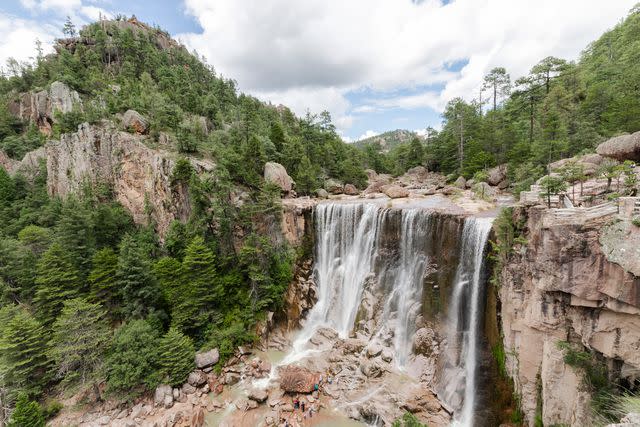
Itzel Garrido/Travel + Leisure
Mexico's northern state of Chihuahua is a different kind of backdrop. The rugged, mountainous landscape is harsh, sometimes unforgiving, but undeniably beautiful. One of the largest states in Mexico, Chihuahua is also one of the least visited, which is a shame because it has so much to offer travelers of all budgets.
Chihuahua is deeply rooted in indigenous and colonial history. It also happens to be home to one of the largest canyons in the world — Barrancas del Cobre. Visitors can explore the canyon via the famous El Chepe train, which traverses the entire canyon, crossing nearly 40 bridges and through more than 80 tunnels as it makes its way to Los Mochis in Sinaloa. Along the way are many opportunities to do half-, full-, and multi-day hikes to waterfalls and trails for horseback riding and mountain biking. Rates on El Chepe’s tourist class start at 700 pesos ($40). First class starts at 1,200 pesos ($70).
In Chihuahua's eponymous capital city, travelers on a budget can freely wander through the Centro Historico and its maze of architecture, restaurants, and nightlife. The stunning Metropolitan Cathedral dates back to the 18th century, while Plaza de Armas is ideal for people-watching.
Regional cuisine is excellent (and excellently priced), with popular dishes ranging from street tacos and Gorditas to carne asada and menudo. La Cocineria is one of the best spots in town for regional norteño cuisine.
Campeche
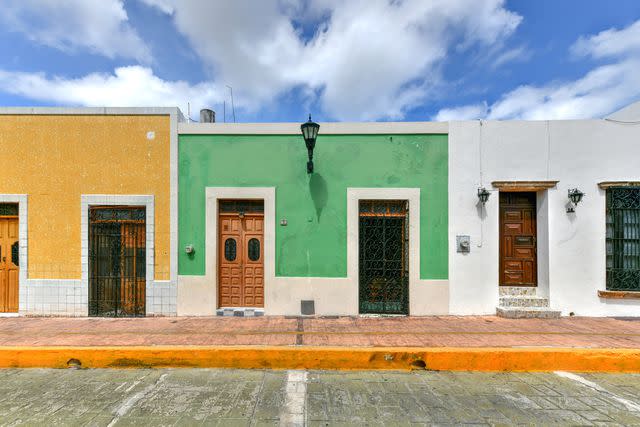
demerzel21/Getty Images
Colorful Campeche is a visual marvel — a colonial kaleidoscope of brilliantly hued buildings perched on the coast of the Gulf of Mexico. Wandering the Centro Historico feels like a jump back through the centuries as you marvel at the cobblestone streets; the orange, blue, pink, and yellow of the historic structures; and the gleaming white San Francisco de Campeche Cathedral that overlooks the square.
Downtown Campeche is a UNESCO World Heritage Site, and the historic structures within the fortified walls are free to explore. Campeche also has a gorgeous malecon that is free to explore, combining seaside views with centuries of history.
No matter where you are in the city, you are sure to find a fantastic seafood restaurant. Campeche’s cuisine draws inspiration from the sea and Yucatecan traditions, like fried fish, cochinita pibil, or panuchos piled high with pulled chicken or turkey.
The city is a perfect starting point from which to dive deeper into the state to discover archaeological sites like Edzná and Calakmul, two immense Mayan cities that receive far fewer visitors than destinations like Chichen Itza or Tulum. In fact, the Calakmul Biosphere Reserve is the largest natural reserve in Mexico, spanning nearly 2,800 square miles.
For more Travel & Leisure news, make sure to sign up for our newsletter!
Read the original article on Travel & Leisure.


